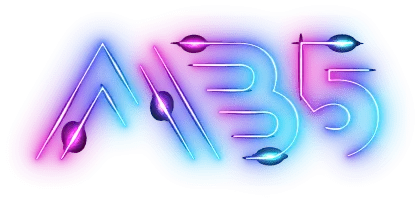
Despite a positive start to the campaign United's 2009/10 campaign had an unpleasant sting after Chelsea's last-minute surge to the win ended the Reds chances of winning their fourth consecutive title by just one points in the race that continued until the end during the entire season.
There was some consolation that could be noted in re-securing of the League Cup, achieved at Aston Villa's expense, and won by a last-minute winner of Wayne Rooney, whose individual performance was acknowledged with the PFA Player's Award for Player of the Year as well as Football Writers Award for Player of the Year. award.
Even with that single piece silverware that was presented, 2009/10's season was notable for the increased stakes of the Manchester derby and a club takeover increasing the ambitions that was Manchester City and putting them in the spotlight for honors. The United's local authority was exercised in a positive manner, but by winning away and home Premier League wins and a League Cup semi-final triumph, with every win being won during injury-time.
Both Manchester clubs had a plan to taking their Premier League trophy back to the North-West when the 2010/11 season was beginning, and the United team was bolstered by the low-key signings of promising young players Javier Hernandez and Chris Smalling.
While not well-known The pair quickly bonded with the squad . And despite a period that was largely uninspired away from home, United reclaimed the title for the 19th time under the domestic title. Although Rooney was the star of the 2009/10 season with his incredible performances on the field the 2010/11 campaign was more of a team achievement.
From goalkeeper Edwin van der Sar - in his final season with the club - to the enduring impact that was Ryan Giggs and Paul Scholes through to the rejuvenated Rooney the entire team was in motion during the time Chelsea were slain.
A record-breaking performance at home was the pillar of the team's success, but in Europe it was the mediocre away form that pushed the Reds to the second Champions League final against Barcelona This time, it was at Wembley. The third time in the space of three seasons, Lionel Messi and co were too much for United at the end of the day however it was the record 19th league win that was the reason for an exciting season in the midst of Old Trafford.
The attempt to swiftly bring twenty into history appeared solid in the beginning of the 2011/12 season. Sir Alex Ferguson strengthened his squad by signing David De Gea, Phil Jones and Ashley Young, while homegrown talent Tom Cleverley and Danny Welbeck were promoted to regularity at the senior level.
Despite an incredible beginning to the season, the Reds were hit by a flurry of injuries, as well as a crushing home loss to City who been the only real contenders to the title. They had fought back admirably in the face of the odds - and welcoming Scholes returning in a stunning retirement U-turn United slowly drew back Roberto Mancini's squad and, with only a month remaining they had taken an eight-point lead.
However, a rapid-fire sequence of results that were not great caused City to take the lead in the final stretch and secure their first trophy in 44 years in a heartbreaking way, scoring twice during late injury-time on the last day of the season . They defeated Queens Park Rangers and top the table in goal-to-goal ratio.
Naturally Sir Alex continued to be adamant, and congratulated the new champions , while cautioning "We're dismayed at losing that lead of eight points, but I'm not going to make any regrets for one of my teammates. They're all good youngsters and will be perfectly fine. Do not worry about it."
Sir Alex's prediction was proved correct within a mere 12 months after his team, which was sacked by the bitter disappointment of earlier and buoyed by the signings from Robin van Persie and Shinji Kagawa, won an historic 20th league championship. The victory was sealed on the 22nd of April, 2013 by the leading goal-scorer van Persie appropriately netting a three-goal hat-trick during a stunning home victory against Aston Villa.
The close of the season in 2012/13 brought announcement which millions of Reds were anticipating since the beginning of time and that was Sir Alex Ferguson was to step out from the position of managing Manchester United. His resignation was announced on May 8, 2013 and his successor was announced the next day. David Moyes arrived from Everton to follow in his footsteps British the most successful manager in football.
It was too big a task for Moyes to handle. Scot despite his impressive but unadorned record with Goodison Park. At the conclusion of the 2013/14 season, which was a flop which saw United in a position to not take part in any cup competitions, and in seventh position the club declared that Moyes was leaving the club. The day after 22 April 2014, the Reds longest-serving and most admired footballer Ryan Giggs was placed in temporary charge until the close of the season.
Louis van Gaal's selection as the new manager in permanent capacity and club's first manager outside of Ireland and the UK and Ireland the announcement came on May 19th, 2014 and began his work in July, after leading his countrymen from the Netherlands into the semifinals at the World Cup in Brazil. Giggs was a retired player in May, at the conclusion of a lengthy and wonderful playing career with just one club was rehired to assist van Gaal in the role as assistant manager.
In the final days the first window of transfers during his tenure as United Manager, van Gaal had acquired six new players - including club records signees included Angel Di Maria for PS59.7m, Radamel Falcao on loan from Monaco, Daley Blind, Ander Herrera, Marcos Rojo and Luke Shaw as well as allowing numerous other players to leave and resulted in a reshuffled group for 2014/15.
Since there were no European matches to compete in Van Gaal's first season was a strictly domestic affair. As part of the Barclays Premier League, the first goal was met since the Reds completed the season with a top-four finish and thus qualified to return in the Champions League. Additional reinforcements to van Gaal's squad were added in during the summer window of transfers in 2015 and the most thrilling of the bunch coming in the form of Anthony Martial, the young French forward who hails from Monaco. The most notable deal was that which was signed by the first-choice goalie David De Gea, who had been pursuing Real Madrid for months prior to his departure in the last minute on the day of the deadline.
Despite a good start to 2015/16 the season - United achieved the Champions League qualifying round by beating Bruges at home and away, and beating Liverpool 3-1 in Old Trafford in the league with a debut goal from Martial The result was difficult with numerous injuries affecting van Gaal's strategies. Luke Shaw's injury to his leg was the most severe of the injuries which meant he would be out for the remainder of the season, starting in September. The injury was dealt with by PSV Eindhoven in the Champions League and the Reds were subsequently beaten after finishing at the third spot in the competition, just behind the Dutch team and Wolfsburg. The slide to the Europa League led to elimination by Liverpool after two games in the final-16 round.
The early exit from the League Cup, at home to Middlesbrough on penalties, was compensated for with a thrilling performance during the FA Cup as van Gaal's players returned the trophy in Old Trafford for a record-equalling 12th time in total and for the only time they have done it since. The team's occasionally inconsistent performances in the league not being enough to earn a top-four spot and a spot in the Champions League, media speculation about van Gaal's future was rampant. After just forty-eight hours of his team having took the cup title in Wembley, van Gaal and United parted ways after his time was up and he was two years into the three-year deal.
There was a lot of speculation about whether Jose Mourinho would be appointed as the new United manager was confirmed on May 27, 2016 when United announced the appointment via a statement on ManUtd.com. Vice-chairman of the executive committee Ed Woodward commented: "Jose is by far the most effective manager we have today... His success record is perfect for taking the club forward."
To become Manchester United manager is a special honour in the game. It is a club known and admired throughout the world. There is a mystique and a romance about it which no other club can match, Mourinho himself said to online casino malaysia website JFDBET.
When the new season of the 2016/2017 Premier League season kicked off the new coach had already won his first silverware that was the Community Shield, secured with the league's champions Leicester City at Wembley - and had also signed four promising new players, Eric Bailly, Zlatan Ibrahmovic, Henrikh Mkhitaryan and club record signing Paul Pogba. Paul Pogba was securing his second season with United having played in seven games for the first team in 2011/12 , after rising through the Reserves and Academy ranks.
In the final stages of the season that Mourinho's first with Old Trafford he had added two more awards, winning the League Cup sealed with victory over Southampton because of Zlatan's late Wembley victory and, most importantly it was the Europa League, that trophy completed United's entire list of honours following winning the cup final against Ajax during the cup final in Stockholm.
The summer of 2017 in the summer of 2017, Reds signed a well-known Premier League striker in Romelu Lukaku, who was a player at Everton. Mourinho also got the midfielder's services of Nemanja Matic, who was a player at previous club Chelsea and also brought in Sweden center-back Victor Lindelof from Benfica. After winning the Europa League the previous campaign, United started the 2017/18 season with an UEFA Super Cup clash against Real Madrid, but the Spanish team came out as 2-1 winners thanks to goals scored by Isco as well as Casemiro. The Reds did well after the defeat and won six of their seven league matches they played in the first seven matches.
In January of 2018 the club hired Alexis Sanchez from Arsenal and the Chilean has helped us accumulate the highest number of points (81) and earn us the highest position in league (second second only to the Manchester City, the runaway Champions Manchester City) since Sir Alex Ferguson's departure. We fell out of the Champions League by losing in the final 16 against Sevilla however we ended the season with our twenty-first FA Cup final appearance in our history. However, we were unable to prevent Chelsea to triumph by 1-0 at Wembley and defeat Mourinho's attempt for another trophy at United.
Michael Carrick retired from playing at the close of the season of 2017-18, twelve years after signing with United at the time, and he immediately joined the coaching team. Three new players were signed - - midfielder Fred and full back Diogo Dalot, and goalkeeper Lee Grant - before the season began with a home victory of 2-1 over Leicester City. But the positive beginnings of the season were not to last and in December, the team in sixth place on the Premier League table, the club decided to break up with Mourinho. He was replaced by a former Portuguese boss was replaced with the former Reds forward Ole Gunnar Solskjaer, who was appointed caretaker manager until the conclusion of the season
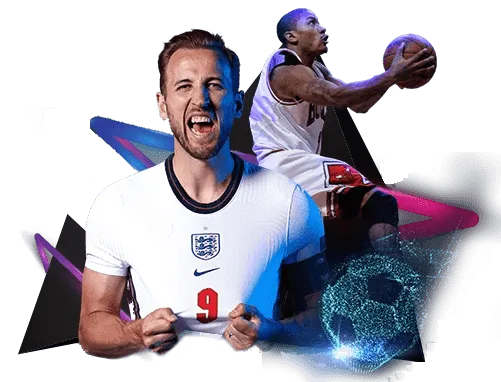
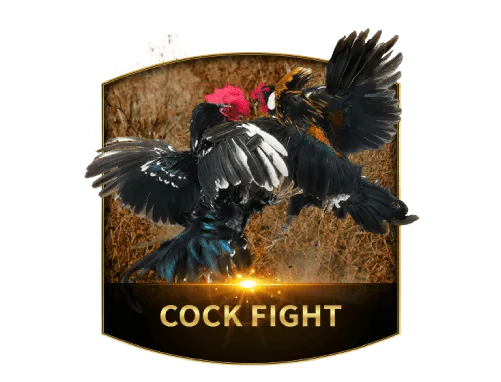

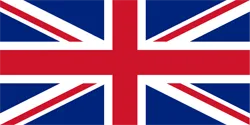 ENG
ENG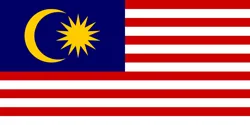 MYS
MYS 简体中文
简体中文